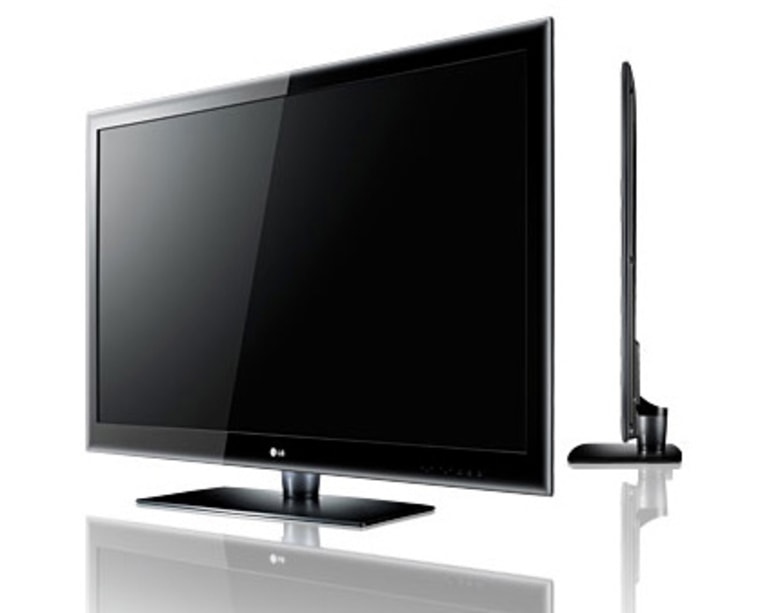Thinking of buying a new TV and want to make sure your room can support it? Want to know what settings to use to make sure you're getting the best performance on an older set? Whether it's brand new or you've had it for years, you better make sure you are treating it right.
Get a setup disc
This one is fundamental. Sure you could mess around with the user settings till you get an ok image, but you won't be able to eyeball the best settings for the TV. Even the pros can't do that. A full ISF calibration is the ultimate in ensuring you're getting the best from your TV, but a calibration disc will get you a lot of the way there. I use the Spears&Munsil disc to setup and test up every TV I review.
Related story: Must-have Blu-ray setup discs reviewed
Get shades/blinds
Seems like an obvious one, but it's worth mentioning. Even the most light-tolerant LCD will look far worse in direct light. Even if you can't or don't want to darken the whole room, you should at least ensure that light won't hit the TV directly.
Move your lamps
Speaking of reflections, most TVs these days have a glossy screen that reflects light really, really well. Even those with special anti-reflective coatings will still reflect some of the light from behind you. Think of the TV like a mirror. If you'd be able to see the lamp in the "mirror" it will be visible when you're watching TV. Something to keep in mind while you're pondering setup.
Mount up
If you plan on getting an LCD of any flavor — especially the new passive 3-D models — and you plan on mounting it above your seated eye line (i.e. where your eyes naturally fall when you're seated) make sure you invest in a tilting mount. All LCDs have diminished performance at angles away from their center line. On some models this is most pronounced side to side, but most lose contrast, color accuracy and worse when you're above or below them. Even a few degrees down from their center line could result in a significantly worse picture. Tilting mounts aren't expensive and will ensure that you're looking directly at the TV for its best picture.
Passive 3D models have specific polarization for each line of resolution, adding another potential artifact when you're off axis, as well as possibly losing the 3-D effect.
You don't have to worry about this with plasma as it looks the same off axis as it does on.
Here's a Peerless model for 32-inch to 50-inch TVs, or a Sanus model for 30-inch to 56-inch TVs. Both models will work with any flat panel TV.
Related story: Mounting your TV
Buy some HDMI cables
HDMI cables are cheap, and the expensive ones do nothing other than empty your wallet. If the cable works, you're getting 100 percent of the image. Amazon has some cheap HDMI cablesunder their own brand that will work just fine. You need HDMI or component to do HD from any source. S-video or composite will not pass HD. If you want to get the latest high-resolution audio formats, you'll need an HDMI connection to your receiver (or six analog cables from a Blu-ray player that has those outputs).
Related story: Don't get tricked into buying extras you don't need
Check your DVD/Blu-ray player settings
Make sure your DVD/Blu-ray player is outputting the correct formats. With DVD, this should be set to "Widescreen" (out of the box it won't be). If its a scaling DVD player, chances are it's as good or better than the scaler in your TV, so set this to 1080p for a 1080p set, or 720p for a 720p TV.
The same with Blu-ray. Set this to output 1080p or 720p if you have a 720p TV.
Check your cable/satellite box settings
Ditto from above. The best option here is "Native," as the scaler in nearly all cable/satellite boxes is for crap. Very few boxes have this option, so set the box to 1080i or 1080p if that's an option. If you have a 720p TV, set the box to 720p as at least you'll be getting some channels in their native resolution (ABC, Fox, ESPN). If 1080i channels look weird, try switching to 1080i and see how that looks.
Check your TV's settings
Movie mode is going to give the best performance. At first it may seem a little "warm" or "reddish" but this is because TVs historically have been overly "cool" or "bluish." The most accurate setting, and the one studios master everything to, is D6500 which roughly translates to a color temperature of 6500 Kelvin. On most TVs this is the "Warm" color temperature setting, though some TVs "Normal" or "Medium" will be closer (albeit likely a little cool). If you want to make sure your TV is the correct color temperature, you'll have to hire a calibrator, as they have the specialized equipment necessary to do so.
The other "features" that typically do more harm than good are "Dynamic," "Black Expansion," and others. Personally when I'm reviewing and watching TV, I turn off every special image "feature" on the TV. Very few of these do anything but harm the image. If you're interested in an accurate image, true to what "the director intended," then you'll do the same. The setup discs mentioned above will help with this a lot.
Now that you know how to treat it right, it's time to finish the lesson: .
Have a question for the HD Guru? Send us an .
